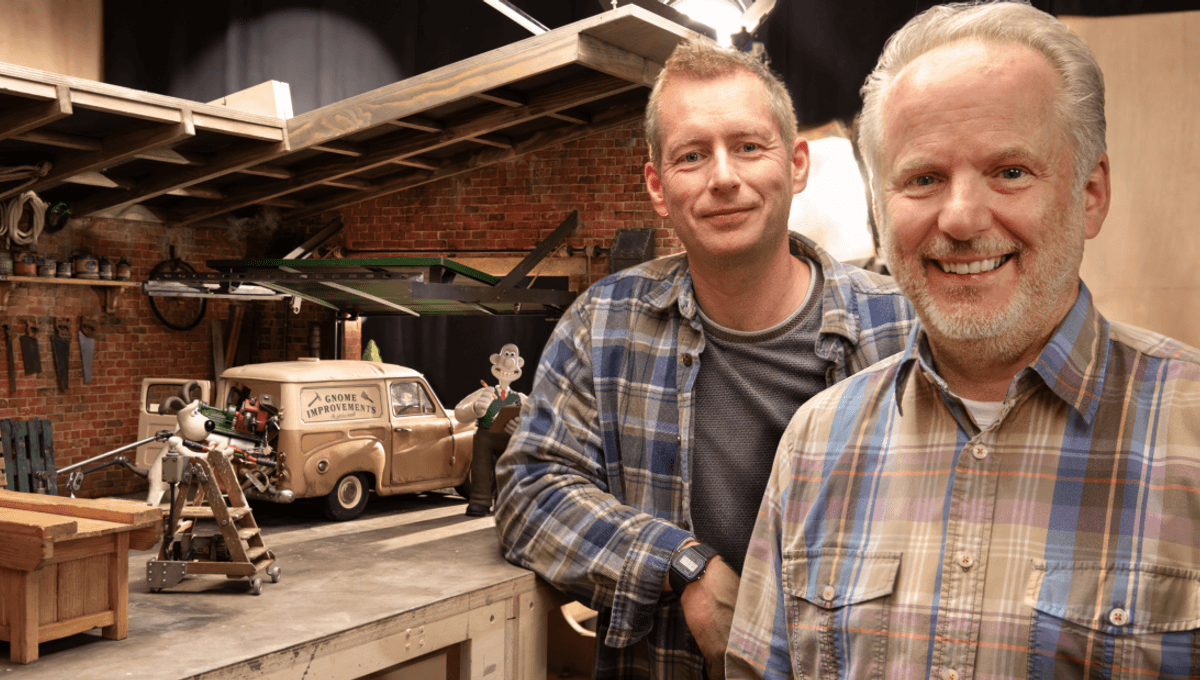
Wallace and Gromit are returning to our screens this Christmas, but with them comes an arguably even more hotly-awaited guest appearance: that villainous penguin, Feathers McGraw. Yes, the glove-hats are off in Aardman‘s Wallace & Gromit: Vengeance Most Fowl, in which we see Wallace grappling with his reputation as an evil inventor. Things get worse when he creates a “smart” gnome that develops a mind of its own, and he and Gromit make the shocking discovery that a vengeful figure from their past may be the mastermind behind their downfall.
It’s been 31 years since Feathers McGraw first blessed our screens, and in that time, filmmaking technology has come a long way. But what about that age-old art form of stop motion? And how does it actually work?
How do you make a film in stop motion?
It begins with preproduction, crafting your story and characters on paper long before you start making physical models. It took the Wallace & Gromit: Vengeance Most Fowl team around a year to perfect this stage, which is crucial, as doing retakes isn’t really an option in stop motion.
Once the folks at Aardman have a rough impression of what the film’s going to look like, they create multiple puppets for each character in different scales, as well as creating the physical sets. Modeling clay is a good place to start, and you can build up a character bit by bit if needed.
Stop motion also requires a physical set, and for their scale of operation, Aardman needs ones that can break apart to give animators access to the puppets, as they’re going to be handling them a lot. So, if you’re just starting out, creating a smaller a small stage for the story will make things easier.
In the same way that you would block a stage play, animators will establish the route of movement of the characters, and then the action begins. They use rigs and scaffolding to keep their characters moving across the landscape, holding them in place so that the animators can work their magic.
How does stop motion work?
Stop-motion animation is one of the oldest styles of animation. It involves shooting lots of frames in which objects change incrementally, creating minute adjustments that can be run together to create the appearance of fluid movement.
The fundamental principle of stop motion has remained pretty much the same since it was used in The Humpty Dumpty Circus, a short film thought to be the first to use the technique that was regrettably lost. An early example you can still watch is Fun In A Bakery Shop, which was released in 1902 and used a “lightning sketch” version of claymation – the art of manipulating malleable materials like clay in stop motion.
People have used things other than clay, too, such as Władysław Starewicz who used dead insects; and photos, as demonstrated by this incredible film about the Apollo missions.
To find out more about what it’s like working on such a complex set, we spoke to co-founder and creative director of Wallace & Gromit at Aardman – Nick Park and Merlin Crossingham, respectively – about their process when creating films for stop motion, how the technology has come along. Plus, there are some top tips for anyone who fancies giving stop motion a go. The key takeaway? “Roll up your sleeves and get started!”
Wallace & Gromit: Vengeance Most Fowl will be available on the BBC in the UK from Dec 25, and worldwide on Netflix from Jan 3.
Source Link: How Does Stop Motion Work? We Caught Up With The Makers Of Wallace & Gromit: Vengeance Most Fowl